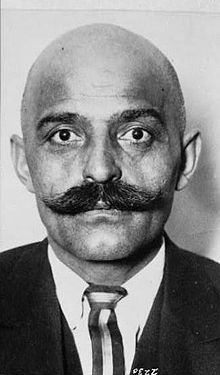
Back Vierde Weg Afrikaans الطريق الرابع Arabic Vierter Weg German Cuarto camino Spanish Neljas Tee Estonian راه چهارم Persian Neljäs tie Finnish Quatrième voie French הדרך הרביעית HE A negyedik út Hungarian
This article needs additional citations for verification. (September 2014) |

The Fourth Way is an approach to self-development developed by George Gurdjieff over years of travel in the East (c. 1890 – 1912). It combines and harmonizes what he saw as three established traditional "ways" or "schools": first, those of the body; second, the emotions; and third, the mind (specifically that of fakirs, monks and yogis). Students often refer to the Fourth Way as "The Work", "Work on oneself", or "The System". The exact origins of some of Gurdjieff's teachings are unknown, but various sources have been suggested.[1]
The term "Fourth Way" was further used by his student P. D. Ouspensky in his lectures and writings. After Ouspensky's death, his students published a book entitled The Fourth Way based on his lectures. According to this system, the three traditional schools, or ways, "are permanent forms which have survived throughout history mostly unchanged, and are based on religion. Where schools of yogis, monks or fakirs exist, they are barely distinguishable from religious schools. The fourth way differs in that "it is not a permanent way. It has no specific forms or institutions and comes and goes controlled by some particular laws of its own."[2]
When this work is finished, that is to say, when the aim set before it has been accomplished, the fourth way disappears, that is, it disappears from the given place, disappears in its given form, continuing perhaps in another place in another form. Schools of the fourth way exist for the needs of the work which is being carried out in connection with the proposed undertaking. They never exist by themselves as schools for the purpose of education and instruction.[3]
The Fourth Way addresses the question of humanity's place in the Universe and the possibilities of inner development. It emphasizes that people ordinarily live in a state referred to as a semi-hypnotic "waking sleep," while higher levels of consciousness, virtue, and unity of will are possible.
The Fourth Way teaches how to increase and focus attention and energy in various ways, and to minimize day-dreaming and absent-mindedness. This inner development in oneself is the beginning of a possible further process of change, whose aim is to transform man into "what he ought to be."
- ^ Anthony Storr, Feet of Clay, p. 26, Simon & Schuster, 1997 ISBN 978-0-684-83495-5
- ^ "In Search of the Miraculous" by P.D. Ouspensky p. 312
- ^ P.D. Ouspensky (1949), In Search of the Miraculous, Chapter 15